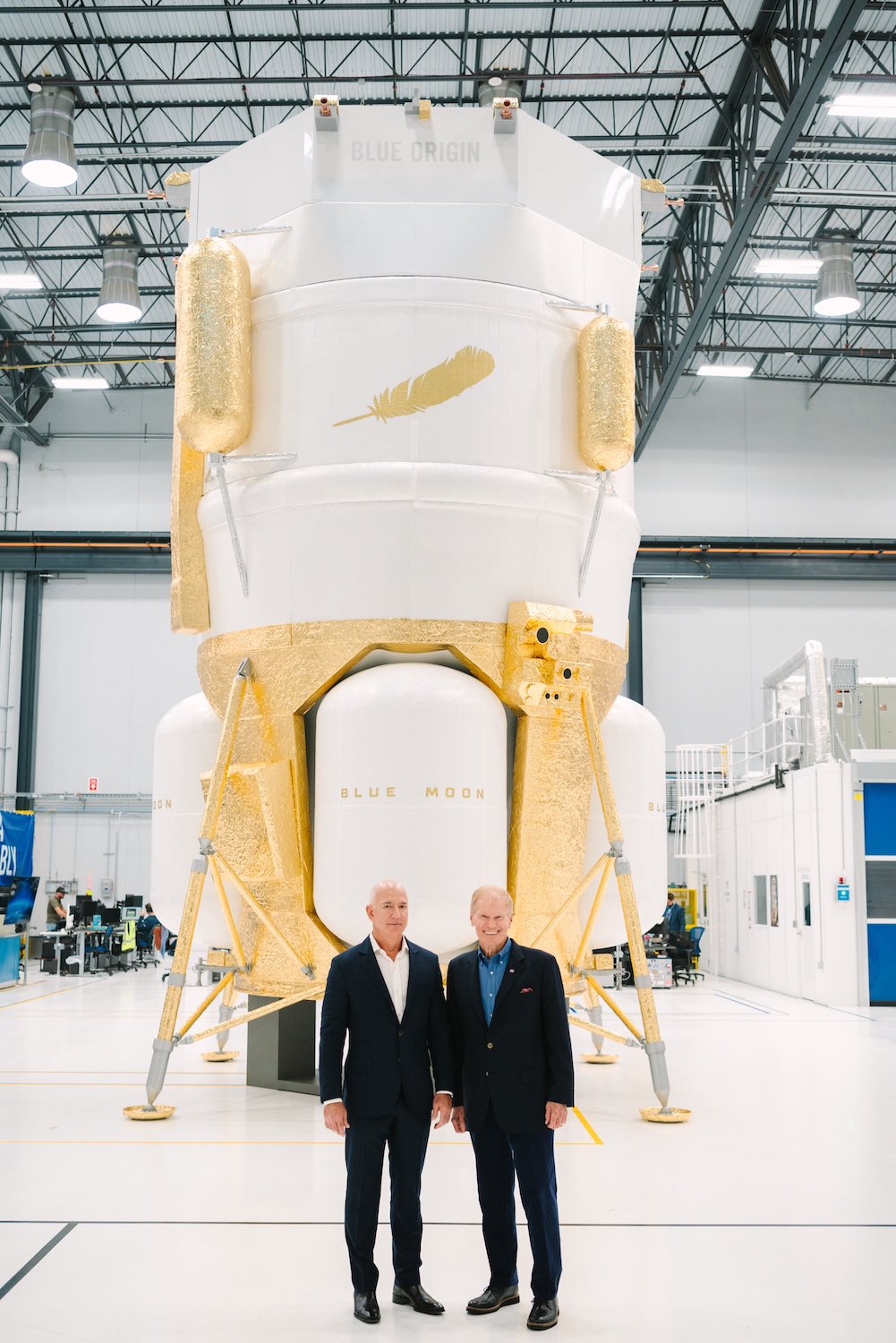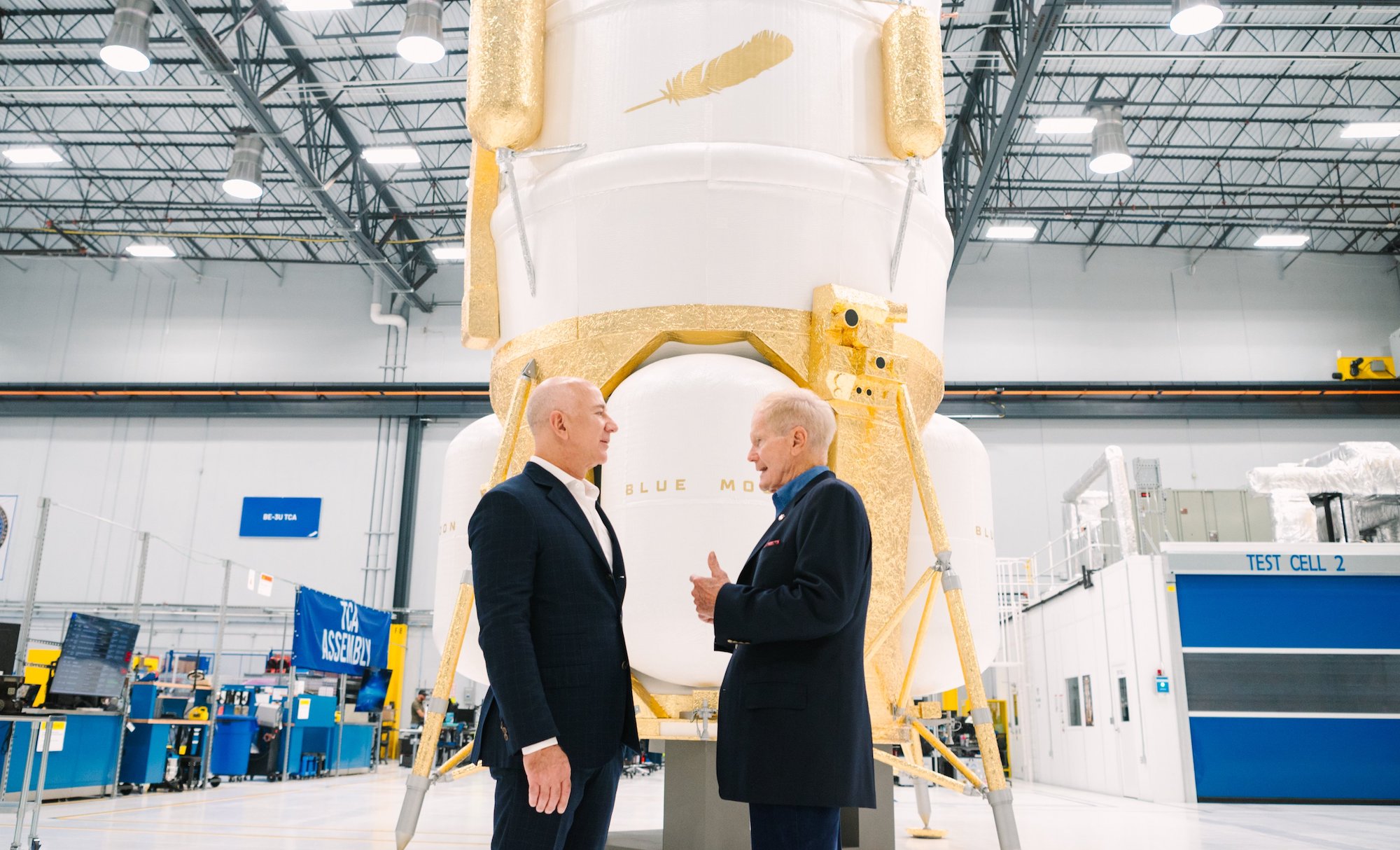Blue Origin, owned by Amazon founder Jeff Bezos, has unveiled a full-scale mock-up of the Blue Moon Mark 1 lander destined for a lunar touchdown.
A gathering attended by Bezos and NASA chief Bill Nelson took place recently at Blue Origin’s engine manufacturing facility in Huntsville, Alabama.
Images from the event were shared on social media by both Blue Origin and Nelson.
“We unveiled our nearly 3-story Blue Moon MK1 cargo lander demonstrator,” Blue Origin said in its post, adding that as well as transporting cargo to the lunar surface, the Mark 1’s early uncrewed missions will also serve to confirm the capability of the vehicle’s technologies.
“MK1 will be capable of delivering three metric tons to any location on the moon’s surface,” Blue Origin said. “That capacity makes it ideal for a variety of logistics, infrastructure, and science payloads.”

Later flights will use Blue Origin’s Mark 2 lander to put astronauts onto the moon. A date for the first Mark 1 mission has yet to be announced, while the first Mark 2 flight carrying astronauts to the lunar surface is currently set for 2029 as part of the Artemis V mission.
The lander will travel to the moon inside the 23-foot-wide (7-meter) fairing atop Blue Origin’s New Glenn rocket, which is currently under development. Astronauts will transfer to the lander from the moon-orbiting Lunar Gateway facility, which is also under development.
Commenting on his first viewing of Blue Origin’s lander — or at least a mock-up of it — NASA boss Bill Nelson described it as “impressive” and said Blue Origin’s landing system will “help ensure a steady cadence of astronauts on the moon to live and work before we venture to Mars.”
Before Blue Origin’s first astronaut mission, SpaceX will use a modified version of its Starship spacecraft to put the first humans on the moon since the final Apollo flight in 1972. The mission, Artemis III, is currently set for 2025.
As part of the Artemis program, NASA also plans to build a permanent lunar base for long-duration stays by astronauts, while the moon could also one day be used to launch crewed missions to Mars and beyond.




